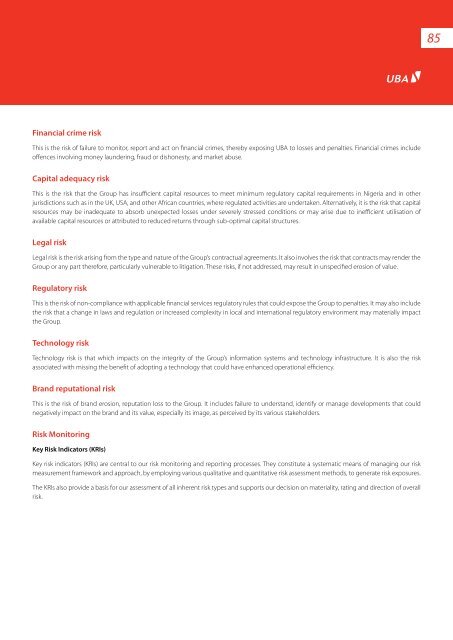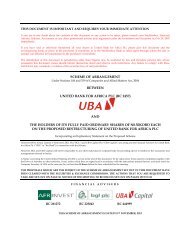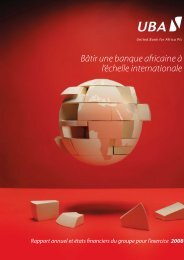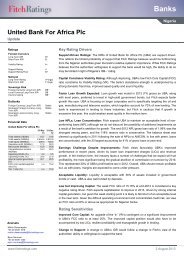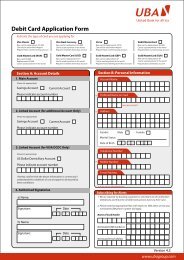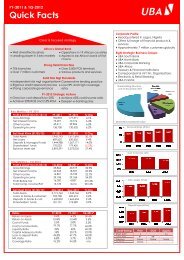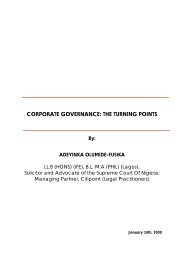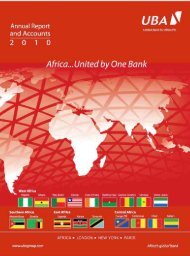2012 Annual Report & Financial Statements - UBA Plc
2012 Annual Report & Financial Statements - UBA Plc
2012 Annual Report & Financial Statements - UBA Plc
You also want an ePaper? Increase the reach of your titles
YUMPU automatically turns print PDFs into web optimized ePapers that Google loves.
85<br />
<strong>Financial</strong> crime risk<br />
This is the risk of failure to monitor, report and act on financial crimes, thereby exposing <strong>UBA</strong> to losses and penalties. <strong>Financial</strong> crimes include<br />
offences involving money laundering, fraud or dishonesty, and market abuse.<br />
Capital adequacy risk<br />
This is the risk that the Group has insufficient capital resources to meet minimum regulatory capital requirements in Nigeria and in other<br />
jurisdictions such as in the UK, USA, and other African countries, where regulated activities are undertaken. Alternatively, it is the risk that capital<br />
resources may be inadequate to absorb unexpected losses under severely stressed conditions or may arise due to inefficient utilisation of<br />
available capital resources or attributed to reduced returns through sub-optimal capital structures.<br />
Legal risk<br />
Legal risk is the risk arising from the type and nature of the Group’s contractual agreements. It also involves the risk that contracts may render the<br />
Group or any part therefore, particularly vulnerable to litigation. These risks, if not addressed, may result in unspecified erosion of value.<br />
Regulatory risk<br />
This is the risk of non-compliance with applicable financial services regulatory rules that could expose the Group to penalties. It may also include<br />
the risk that a change in laws and regulation or increased complexity in local and international regulatory environment may materially impact<br />
the Group.<br />
Technology risk<br />
Technology risk is that which impacts on the integrity of the Group’s information systems and technology infrastructure. It is also the risk<br />
associated with missing the benefit of adopting a technology that could have enhanced operational efficiency.<br />
Brand reputational risk<br />
This is the risk of brand erosion, reputation loss to the Group. It includes failure to understand, identify or manage developments that could<br />
negatively impact on the brand and its value, especially its image, as perceived by its various stakeholders.<br />
Risk Monitoring<br />
Key Risk Indicators (KRIs)<br />
Key risk indicators (KRIs) are central to our risk monitoring and reporting processes. They constitute a systematic means of managing our risk<br />
measurement framework and approach, by employing various qualitative and quantitative risk assessment methods, to generate risk exposures.<br />
The KRIs also provide a basis for our assessment of all inherent risk types and supports our decision on materiality, rating and direction of overall<br />
risk.


